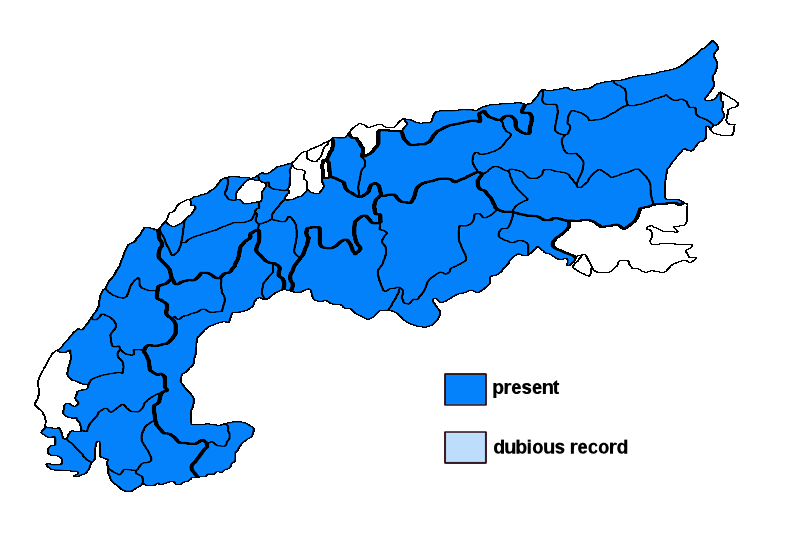Placidium rufescens (Ach.) A. Massal.
Syn.: Catapyrenium lachneum (Ach.) R. Sant. subsp. rufescens (Ach.) Clauzade & Cl. Roux, Catapyrenium rufescens (Ach.) Breuss, Dermatocarpon rufescens (Ach.) Th. Fr., Dermatocarpon rufopallens (Nyl.) Zahlbr., Dermatocarpon terrigenum Tomin, Endocarpon rufescens Ach., Endocarpon rufopallens Nyl., Endopyrenium rufescens (Ach.) Körb., Endopyrenium rufopallens (Nyl.) Müll. Arg.
Lichenised.
Substrate: calciferous rocks, intermediate rocks (such as calciferous schists), siliceous rocks, calciferous soil, living mosses
Altitudinal range: from the mesomediterranean belt (potential vegetation: evergreen broad-leaved forests dominated by Quercus ilex) to the alpine belt (potential vegetation: treeless Alpine grasslands and tundras, to the lower limit of perennial snow and the equilibrium line of glaciers)
Note: a Mediterranean to (mainly) mild-temperate, holarctic lichen found on vertical seepage tracks of calcareous rocks, almost always with colonies of cyanobacteria, more rarely on plant debris, calciferous soil, terricolous or epilithic bryophytes; widespread throughout the Alps, reaching the alpine belt in sunny, warm sites.
Austria: Vorarlberg; Tirol; Salzburg; Kärnten; Steiermark; Oberösterreich; Niederösterreich (incl. Wien); Germany: Oberbayern; Switzerland: Bern; Graubünden; Luzern; Schwyz; Ticino; Uri; Vaud; Valais; France: Alpes-de-Haute-Provence; Haute-Alpes; Alpes-Maritimes; Isère; Savoie; Haute-Savoie; Vaucluse; Var; Italy: Friuli; Veneto; Trentino Alto Adige; Lombardia; Piemonte; Valle d'Aosta; Liguria;





